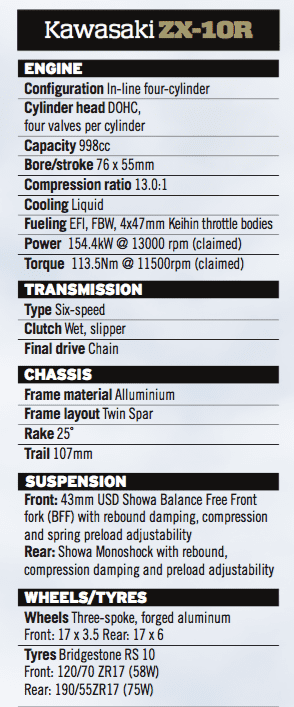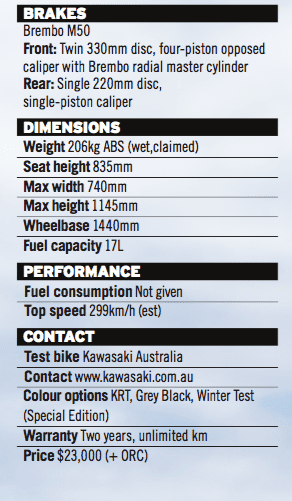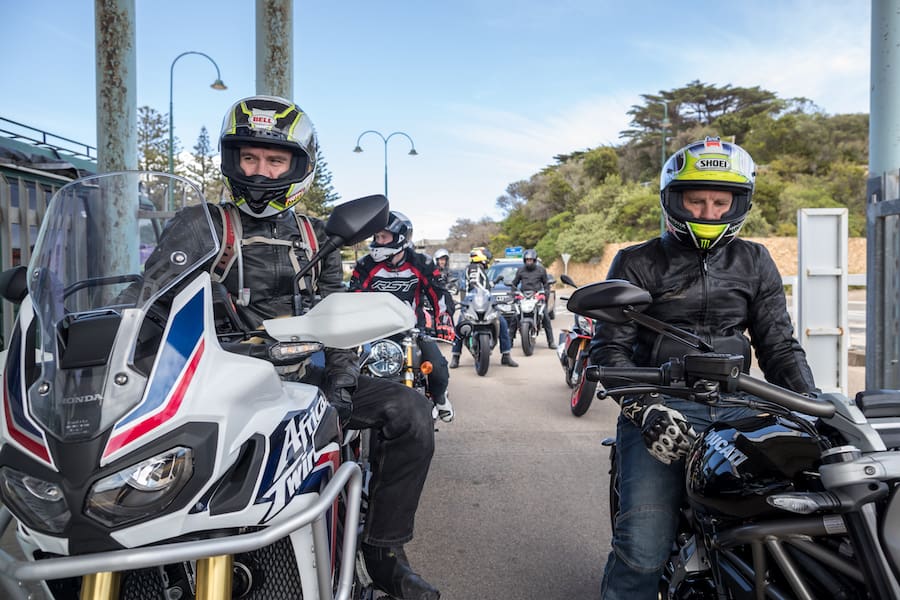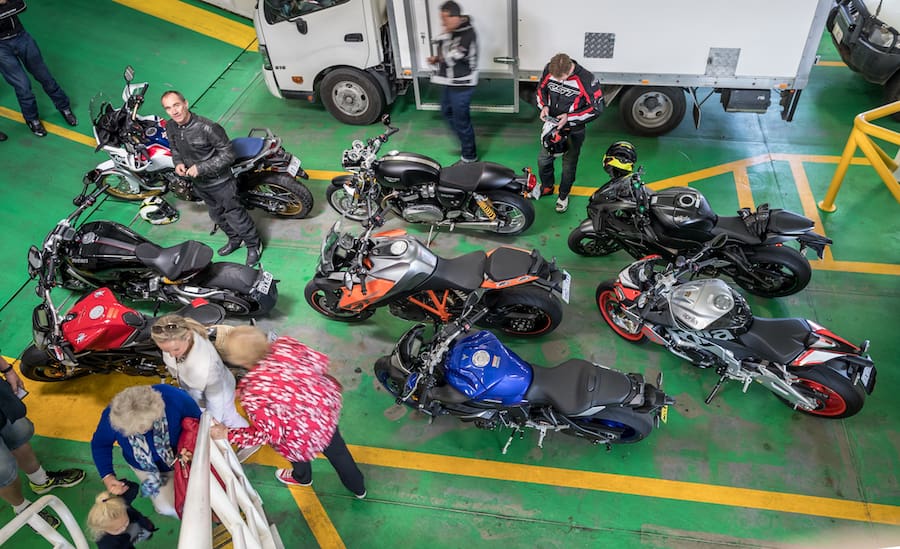This year we selected eight wonders: the Kawasaki ZX-10R, the Honda Africa Twin, the Triumph Thruxton R, the Aprilia 1100 Tuono Factory, the MV Agusta Brutale 800, the Ducati XDiavel S, the Yamaha MT-10 and the KTM Super Duke GT. They come from across the spectrum of bike genres: adventurers, tourers, café racers, nakedbikes and out-and-out track weapons.
What they have in common is that they all stood out from the two-wheeled crowd in 2016. Each scored an invite to AMCN’s annual MOTY ride, which this year took in the Great Ocean Road and some of the best scratching roads in the Otway Ranges. Saddle up…
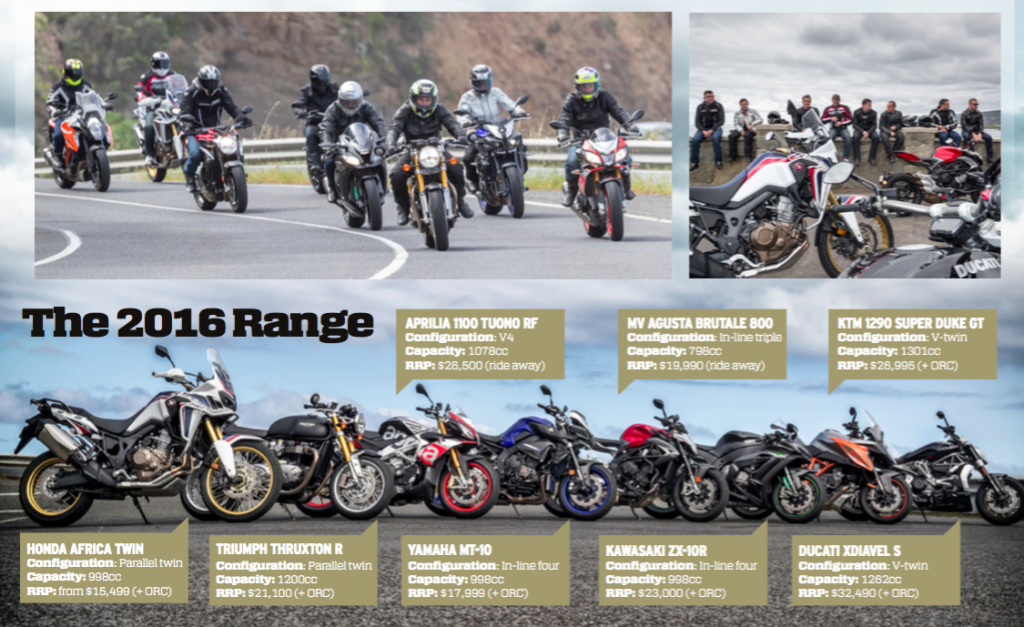
Kawasaki 2016 Ninja ZX-10R
As far as hitting targets and meeting its design brief goes, Kawasaki’s 2016 Ninja ZX-10R scored a triple bullseye. Number one and two in the Superbike World Championship, plus the Superbike Manufacturers’ World Championship. Job done. Can’t argue with that.
Of course, the real world isn’t a racetrack. But then again, the ZX-10R does a damn fine job of turning it into one if that’s what you want – and if you have the skills, speed of thought, and mettle to back it up. That’s the problem with road-going thoroughbred racebikes such as the ZX-10R, their relevance and performance is nigh on impossible for the average rider to comprehend, let alone explore or appreciate. But this is also part of their mystique and appeal: to own the untameable, and propel yourself into the realms of the extraordinary, into a world created purely for freaks like Messrs Rea and Sykes.
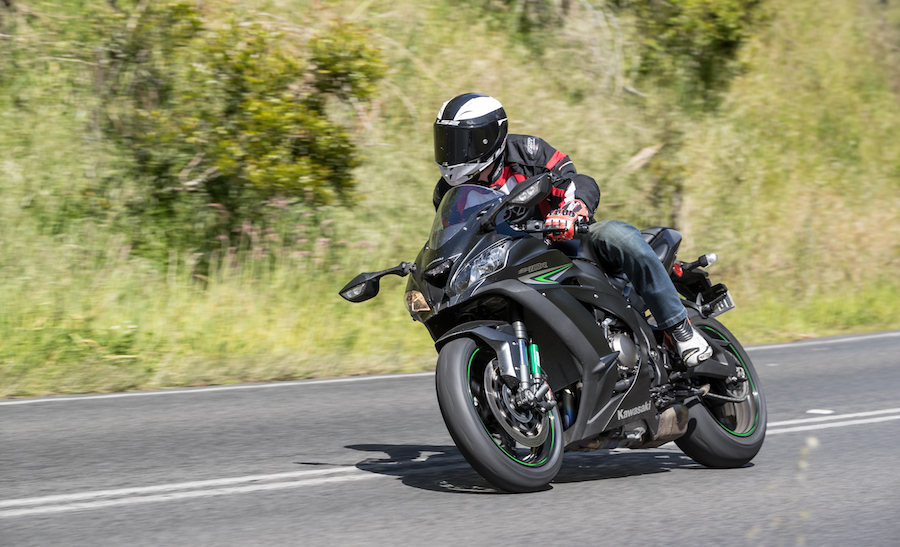
For a WSBK-winning, head down, arse up, litre superbike, the ZX-10R actually makes a pretty reasonable roadbike. This is a hard balance to strike when the demands of racing success are so narrowly focused. The racer-prone riding position isn’t too extreme, and for me was far more user friendly on the road than the Kawasaki’s most obvious adversary, the BMW S1000RR. Another area where I felt Team Green has bettered its formidable Bavarian foe is its suspension performance for aggressive riding. Yes, it is rigid, as it needs to be. But the heavily revised ZX-10R chassis proved completely unflappable when railing bumpy switchbacks at naughty speed.
In terms of technology, the ZX-10R is stacked. You could fill a scrabble board with the acronyms going on here. In terms of noteable innovation among the alphabet spaghetti, KCMF (Kawasaki Corner Management Function) is an amalgamation of all the ZX-10R’s rider aids into one integrated system with the purpose of smoothing out the rider’s cornering technique. A more noticeable innovation is the Showa Balance Free front fork, which along with a greatly improved overall chassis package, including a stunning and much needed braking hardware upgrade, gives the 2016 ZX-10R a fortitude of road holding which is the most significant advantange over its predecessor.
The Ninja’s motor and engine management system recieved just as much attention as the chassis for 2016. Its lighter crankshaft also contributes to the chassis’ performance. Smoother, faster acceleration from lower in the rev range, flawless fuelling, and silky electronically assisted gear selection are among the attributes of this major model overhaul.
No need for drink, drugs, or adrenal supplements when you can peel back the throttle on a Ninja at least once a week. First gear is more than adequate to get you locked up for a long stretch, and the other five cogs are pure gravy. Best keep those antics for trackdays though, if you’ve got a full bag of marbles.
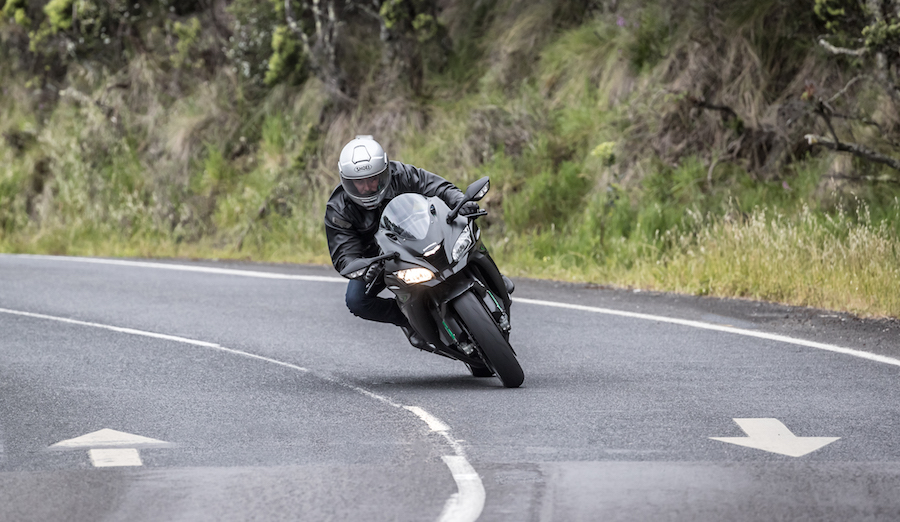
How we did this….
Choosing your favourite motorcycle based on personal taste is relatively easy. Judging a Motorcycle of the Year across the whole gamut of riding genres is a far more challenging proposition. Not too many motorcyclists choose to ride all genres, let alone get the opportunity to do so on the latest and greatest.
To break down the barriers of personal preference among our eight-strong test team, MOTY 2016 was based on an intensive diet of ride by day, debate by night, over three days of pure motorcycling over-indulgence. During the course of the event, preconceptions were shattered, opinions were transformed, and votes vacillated back and forth between the bikes as their finer points and failings were exposed and examined. But that’s what happens when you have eight outstanding motorcycles at your disposal – your favourite is usually the one you’ve just got off. That is, until you take off on the next one, and the next.
Our base for the event was the town of Forrest in the Otway Ranges, around 30 minutes north of Apollo Bay. This area has some of the best lesser-known motorcycling roads in Victoria. Everyone has heard of the sensationally scenic (albeit slow and over-crowded) Great Ocean Road, but hidden away in the surrounding ranges is some stunning riding and eye-popping views to rival anywhere in the garden state. And rather than enduring the mind-numbing Geelong freeway twice in one trip, we opted to slip down through Melbourne’s southern suburbs, cut a quick lap of Arthurs Seat, then catch the Sorrento-Queenscliff ferry
for a Bellarine Peninsula approach to the Otway Ranges.
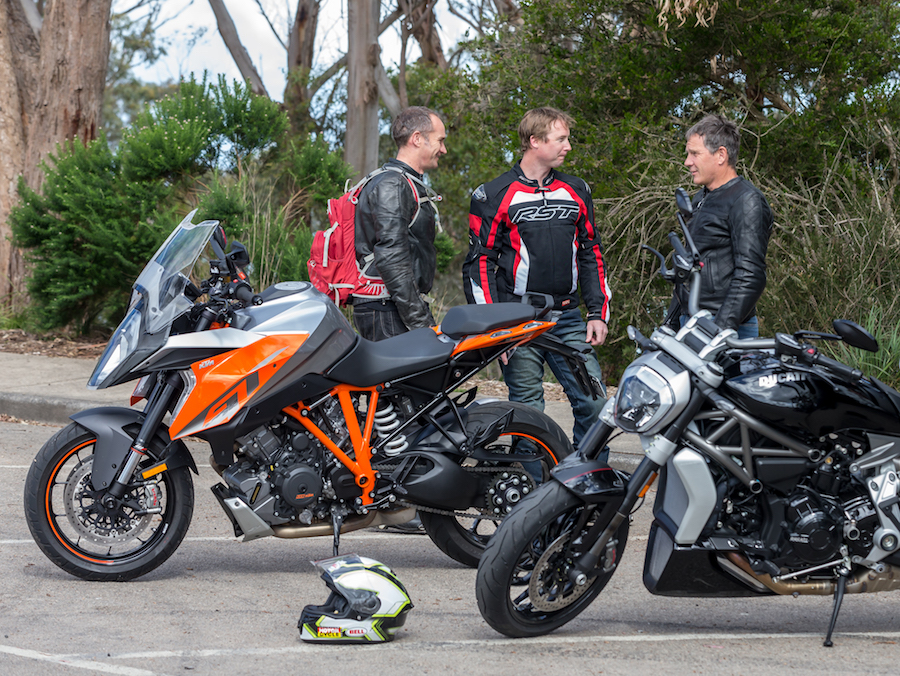
To be nominated for MOTY, each motorcycle needed to be a new or substantially revised model release in the past 12 months. The judging criteria for the final vote included innovation, application of technology, relative performance in its sector, quality and finishing, and value.
At the end of testing, each of our judges scored the bikes in order of merit, with eight points going to the top pick, down to a single point for eighth. All except for our esteemed Editor Dobie, who was so tormented by the excellence of this year’s nominations that he insisted on scoring two bikes equal first, and two bikes equal second. In his case, the points were shared.
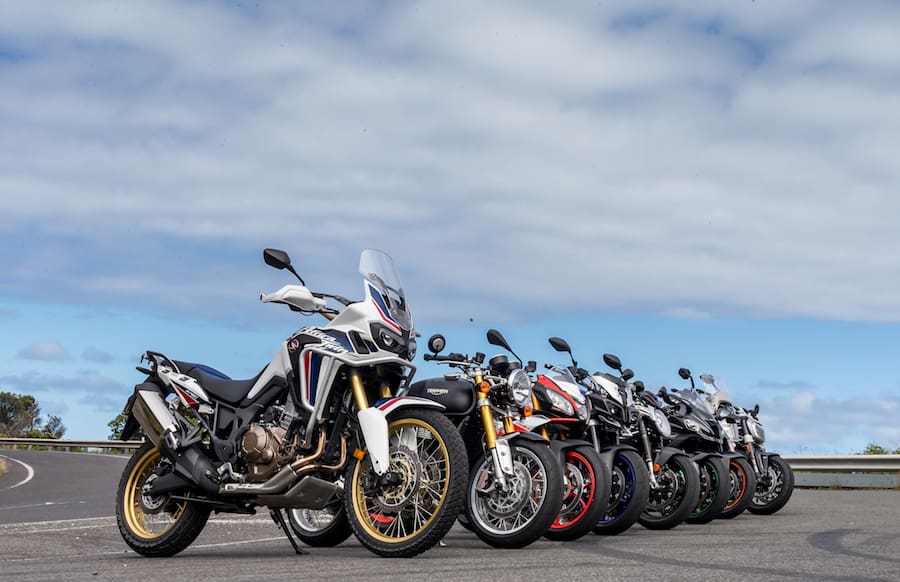
Choosing your favourite motorcycle based on personal taste is relatively easy. Judging a Motorcycle of the Year across the whole gamut of riding genres is a far more challenging proposition. Not too many motorcyclists choose to ride all genres, let alone get the opportunity to do so on the latest and greatest.
To break down the barriers of personal preference among our eight-strong test team, MOTY 2016 was based on an intensive diet of ride by day, debate by night, over three days of pure motorcycling over-indulgence. During the course of the event, preconceptions were shattered, opinions were transformed, and votes vacillated back and forth between the bikes as their finer points and failings were exposed and examined. But that’s what happens when you have eight outstanding motorcycles at your disposal – your favourite is usually the one you’ve just got off. That is, until you take off on the next one, and the next.

Our base for the event was the town of Forrest in the Otway Ranges, around 30 minutes north of Apollo Bay. This area has some of the best lesser-known motorcycling roads in Victoria. Everyone has heard of the sensationally scenic (albeit slow and over-crowded) Great Ocean Road, but hidden away in the surrounding ranges is some stunning riding and eye-popping views to rival anywhere in the garden state. And rather than enduring the mind-numbing Geelong freeway twice in one trip, we opted to slip down through Melbourne’s southern suburbs, cut a quick lap of Arthurs Seat, then catch the Sorrento-Queenscliff ferry
for a Bellarine Peninsula approach to the Otway Ranges.
To be nominated for MOTY, each motorcycle needed to be a new or substantially revised model release in the past 12 months. The judging criteria for the final vote included innovation, application of technology, relative performance in its sector, quality and finishing, and value.
At the end of testing, each of our judges scored the bikes in order of merit, with eight points going to the top pick, down to a single point for eighth. All except for our esteemed Editor Dobie, who was so tormented by the excellence of this year’s nominations that he insisted on scoring two bikes equal first, and two bikes equal second. In his case, the points were shared.

